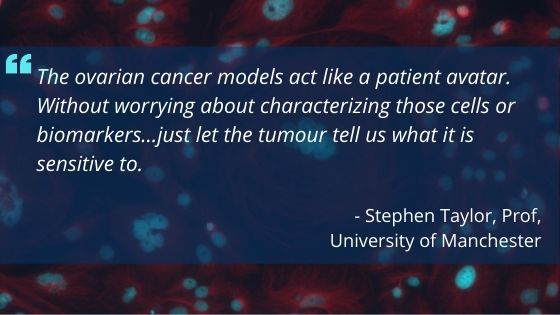Ovarian cancer is the leading cause of gynecological-related mortality. High-grade serous ovarian carcinoma (HGSOC), the most prevalent subtype, develops rapidly and is rarely diagnosed before the advanced-stage disease. Treatment options are limited and survival rates have not improved substantially for 20 years.
To develop a new, more effective treatment, researchers need pre-clinical models that more closely reflect ovarian cancer in vivo. While cancer cell lines are an important resource, they come with a number of limitations. Perhaps most well-known is the simple fact that some well-established cell lines have existed for so long.
“Some have been growing in culture for 40, 50, maybe 60 years. If you think about genetic drift, and how those cells will have adapted – do they really reflect the original tumor from which they came?” asks Prof. Stephen Taylor, University of Manchester. “We have very little knowledge about the origins of some of those cell lines. There’s no pathology to go with them and there’s certainly no clinical data.”

It was the promise of a model system that more accurately reflected the phenotypic and genetic characteristics of ovarian cancer cells that spurred Taylor and his lab on developing their living biobank. If they could collect and grow ovarian cancer cells directly from patients, they could avoid this genetic drift and annotate each culture with clinical information. Running on the assumption that the main barrier was access to patient samples, they set up a collaboration with The Christie and the Manchester Cancer Research Centre (MCRC) Biobank and began to collect the ascites of ovarian cancer patients.
Click here to read more.
